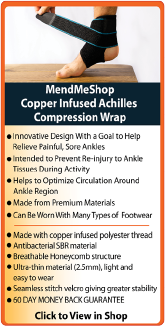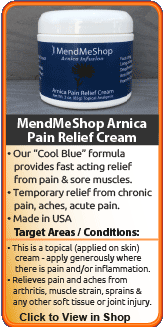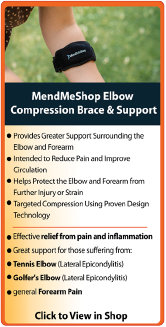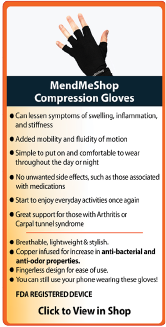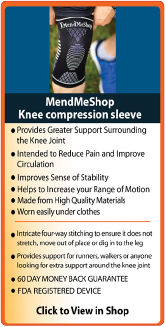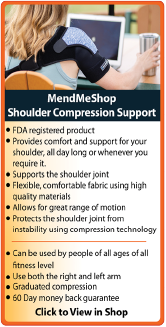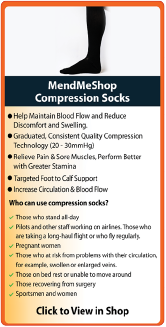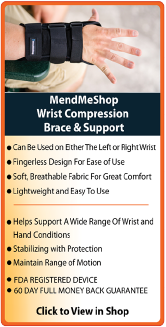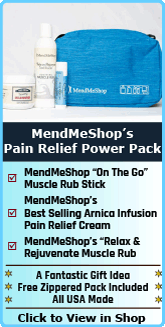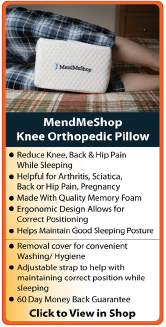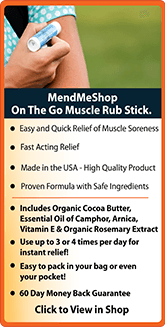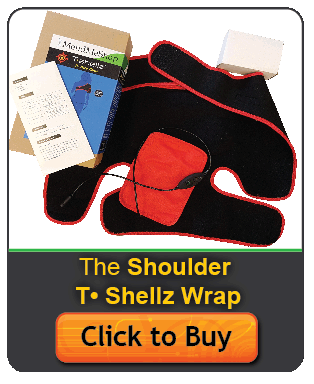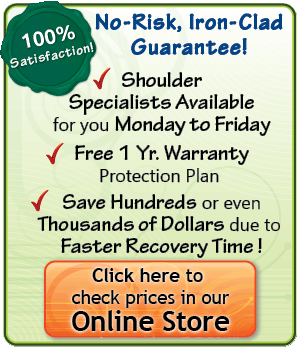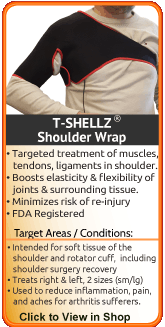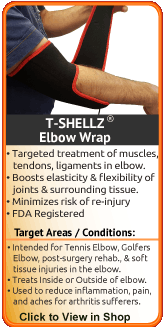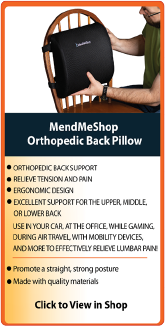|
| SLAP TearSLAP = Superior Labrum Anterior to Posterior LesionTypes of SLAP TearsWith a SLAP tear, the amount of damage to the labrum can vary. The type of tear is classified as type 1 to 4 depending on the severity of the tear, with 4 being the most severe.  Type 1Degenerative fraying, and possibly a tiny tear, of the superior labrum. The edges of the labrum become rough but it remains attached to the glenoid cavity. This is usually a result of the cartilage becoming brittle with age. Type 2The superior labrum is torn away from the glenoid cavity leaving a gap between the cartilage and the bone. The tear can occur from the biceps tendon forward (anterior), from the biceps tendon backward (posterior), or along the entire top of the labrum (anterior-posterior). Type 2 tears are the most common SLAP tears and are usually a result of an injury, such as a shoulder dislocation. Type 3A 'bucket-handle' tear at the top of the labrum which leaves a flap of cartilage loose at the top of the shoulder joint. The torn cartilage may get caught within the glenohumeral joint causing a locking, clicking, or popping feeling. Generally, you doctor will recommend arthroscopic surgery to remove the 'bucket handle' section of the tear and to reattach the remainder of the detached labrum. Type 4An extension of the SLAP tear into the biceps tendon. A Type 4 tear requires arthroscopic surgery to reattach the labrum to the glenoid cavity (SLAP repair) and suture the biceps tendon (called a biceps tenodesis). Bankart LesionThis is another type of tear to the labrum but it doesn't occur at the superior, or top of the labrum and is therefore, not referred to as a SLAP lesion. A Bankart tear occurs to the lower, front area of the labrum and can extend upwards. It may also occur along with a Hill-Sachs lesion, which refers to a damaged humeral head, and/or a separation of the biceps tendon at the rotator cuff. Symptoms of a Torn LabrumSymptoms common to a SLAP tear include: 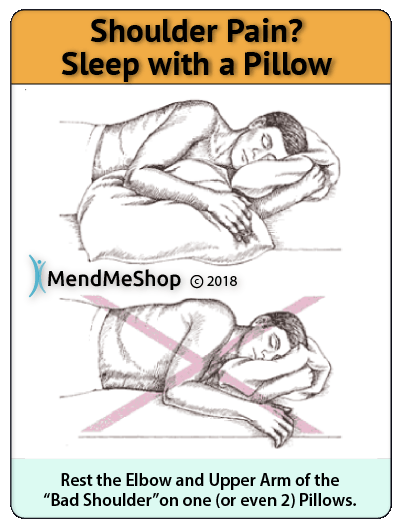
If the tear is extensive (i.e. Bankart lesion) the chance of the shoulder becoming dislocated increases. What Causes a SLAP Tear?Like many shoulder injuries, SLAP tears are usually a result of a fall directly on the shoulder or falling on an outstretched hand. Repetitive or forceful overhead movements can also cause Superior Labrum from Anterior to Posterior tears. Therefore, participating in sports such as volleyball, tennis, and baseball can put you at risk. SLAP Tear TreatmentsMost Type 1 and 2 SLAP tears can be treated with non-invasive therapies such as Circulation Boost(TShellz Wrap®). Surgery is usually performed in the case of Type 3 and 4 tears so the torn labrum can be reattached to the glenoid cavity or other part of the labrum it was torn away from. Following surgery, the use of a Cold Compress or Ice Pack and a Shoulder TShellz Wrap® will reduce pain, inflammation, scar tissue and healing time! The trick to treating your SLAP tear, improving your range of motion, and getting your shoulder back in the best possible condition you can is to improve elasticity and actively try to reduce scar tissue in and around the SLAP tear - this is an area where Circulatory Boost can help! If you heal your SLAP tear properly and treat scar tissue build up, your chance of re-injury or chronic shoulder conditions later on is much lower than average. Cold CompressionTo decrease inflammation and relieve the pain of a SLAP tear doctor's recommend cold compression. Cold compression within the first 48 - 72 hours of a tear, after any strain or re-injury, or following surgery is effective at relieving pain and swelling while limiting the amount of damage done to your tissue. In addition, cold temperature can reduce, or even eliminate, the need for NSAIDs that affect your entire body unnecessarily. Cold works by interrupting and slowing nerve and tissue function in the injured area and reducing swelling that can block blood vessels. This is important because once blood vessels are blocked or damaged, they can no longer carry oxygenated blood through your labrum and tissues begin to break-down. Without cold compression damage continues as tissues break-down - they cannot get the oxygen they need to survive. By limiting the amount of damage done to your tissue, you also limit the amount of healing that needs to occur. This is a very important step to heal your SLAP tear faster and with less pain! Application of a Cold Compress or Ice Pack reduces tissue damage. Furthermore, because cold will numb the nerves, the wraps also reduce pain! TShellz Wrap® = Circulation BoostAfter severe inflammation and swelling is reduced you can begin to treat your shoulder with Circulation Boost (using a Shoulder TShellz Wrap®). The Shoulder TShellz Wrap® = Localized Enhanced Circulation Response in the shoulder. Use of this device results in a dramatic increase in blood flow to the treatment area in the shoulder - all in a non-invasive manner. Have you seen what happens when you add water to a flower wilted from drought? In essence, your injured shoulder is much like a "wilted" flower; your body wants to heal its injury, but needs lots of nutrients to do it. Blood brings new life to your tissue by delivering healing nutrients and oxygen that are vital for their survival. In addition, the blood carries away toxins and waste cleaning the area and healing it faster. Without a good supply of blood, your shoulder simply won't heal properly. Using a TShellz Wrap® will not expose you to the risk of causing further harm to soft tissue like you can when using rigorous exercise. The Shoulder TShellz Wrap® accomplishes the goal of enhanced blood flow without the need for intensive exercise and as such reduces your risk of re-injury. The glenohumeral joint naturally receives a limited blood supply and when you stop moving your shoulder because it hurts, the blood flow drops even further, limiting your body's natural ability to heal itself. By treating the area with a TShellz Wrap® you can increase your body's blood supply to the shoulder and maximize your body's natural healing ability. In addition, the improved blood flow whisks away dead tissue and toxins that have built up from your SLAP tear. When you stop moving your arm and shoulder due to shoulder pain, your muscles and other tissue can become weaker and dead tissue and toxins in the area can cause further tissue deterioration - this can lead to atrophy. By clearing the area of toxins and increasing the amount of oxygen and nutrients to your labrum and other tissue, the risk of atrophy (muscle weakness and/or deterioration) is greatly reduced. Keeping your upper arm, shoulder joint and rotator cuff tissue as healthy as possible throughout the healing process will allow you to improve shoulder strength again once your pain has gone and your SLAP tear has healed. Shoulder instability (or dislocation), chronic pain, reduced range of motion, and frozen shoulder (adhesive capsulitis) are some of the more common long term complications that can occur when SLAP tears go untreated. By actively treating your labrum and glenohumeral joint at home via conservative treatment options (such as rest, cold compression, heat application via the Shoulder TShellz Wrap®, and gentle stretching) joint elasticity increases, scar tissue growth is minimized and the labrum and surrounding soft tissue (tendons,ligaments,muscle) become stronger reducing the risk of chronic problems in the future. During the healing process, scar tissue builds at the location of the tear. In addition, scar tissue can also bind the labrum, ligaments and other tissue together within the joint capsule and surrounding the rotator cuff. The inflexible scar tissue limits the movement of these connective tissues that were once elastic and allowed the shoulder its stability and large range of motion. As a result, movement of the entire joint is limited making it difficult to lift your arm or to reach for objects. If left untreated, the shoulder may 'freeze' (a condition called frozen shoulder or adhesive capsulitis) altogether making movement impossible. At the very least, scar tissue leaves your shoulder joint weaker, leaving your shoulder and rotator cuff at greater risk of further injury. To learn more about conservative treatment options for the shoulder, go to our treatment page. Once the inflammation of your SLAP tear has been reduced, nourishing and strengthening the labrum and surrounding tissue is recommended. Enhanced blood flow via the use of a Shoulder TShellz Wrap® will provide this nourishment, help keep your glenohumeral joint as healthy and flexible to prepare it for strengthening exercises. Talk to your doctor or PT to find out which exercises are appropriate for your situation. With these simple and safe home conservative treatment tools, you will notice significantly reduced pain and an incredible improvement in your shoulder joint range of motion. Remember: We recommend that you consult your doctor and/or physiotherapist before using any of our outstanding products, to make sure they're right for you and your condition. Surgical TreatmentsA surgical SLAP repair may be required to shave the frayed edge of the labrum, reattach the labrum to the glenoid cavity, remove the 'bucket handle' portion, and/or suture the torn labrum. Depending on the location of the tear, a tiny hole may be drilled in the bone to suture the cartilage to the bone, or the labrum (and/or biceps tendon) may be sutured back together. With any shoulder pain, it is recommended that you see your doctor for a proper diagnosis as there are many injuries and conditions that could be the cause of your pain. An MRI will help your doctor determine what damage has been done, the proper treatments, whether surgery is necessary, and which procedure will be performed. During your recovery, you may have to modify and/or eliminate any activities that cause pain or discomfort in your shoulder joint until your pain and inflammation settle, and you gain more mobility and strength in your shoulder. The more diligent you are with your treatment and rehabilitation, the faster you will see successful results! Click HERE to Go To Our Online Store We take all major credit cards and Paypal. Learn More About The Rotator CuffLearn more about Shoulder Surgery and Post-Surgery Recovery Learn more about The TShellz Wrap Learn more about which is better for your rotator injury - ice or heat FREE SHIPPING ON ALL PRODUCTS CURRENTLY ENABLED |
|

